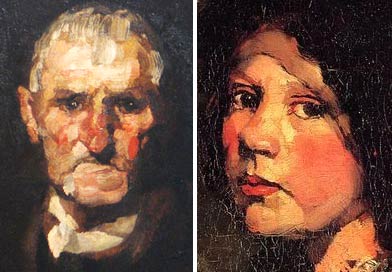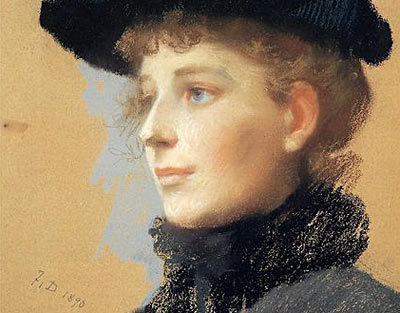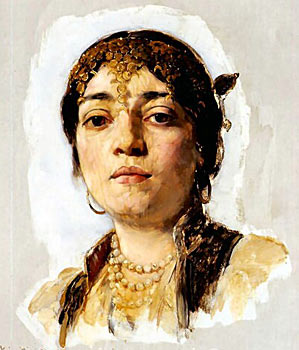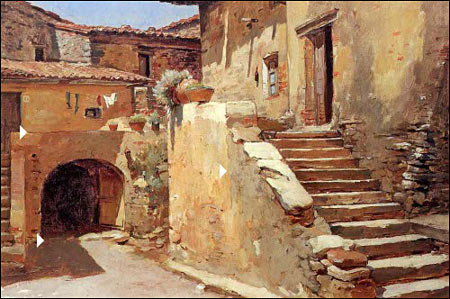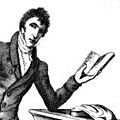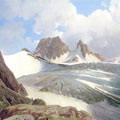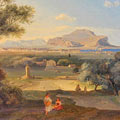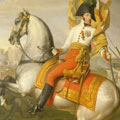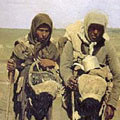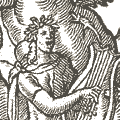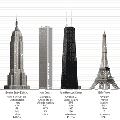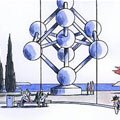Frank Duveneck (1848-1919)
 Samen met zijn land- en leeftijdgenoot William Merritt Chase studeerde Frank Duveneck van 1872 tot 1878 aan de kunstacademie in München. De beide jonge Amerikanen stonden daar onder invloed van Wilhelm Leibl en Carl von Piloty en werden gestimuleerd in het rauwe schilderen a la prima zonder retouche. Duveneck en Chase raakten met elkaar bevriend en vertrokken na hun studietijd naar Italiëom in de buitenlucht te schilderen. Terwijl zijn vriend in 1878 terugkeerde naar Amerika, bleef Duveneck die van Duitse afkomst was, in Beieren en begon in het plaatsje Polling les te geven aan een groepje jonge schilders, dat al snel bekend stond als ‘The Duveneck Boys’. In de jaren negentig keerde Duveneck terug naar Amerika en vestigde zich in Cincinnati. Evenals zijn vriend William Merritt Chase in New York werd hij in zijn stad een leidende figuur en introduceerde hij aan de academie het losse a la prima schilderen. In 1904 werd hij directeur van de kunstacademie van Cincinnati.
Samen met zijn land- en leeftijdgenoot William Merritt Chase studeerde Frank Duveneck van 1872 tot 1878 aan de kunstacademie in München. De beide jonge Amerikanen stonden daar onder invloed van Wilhelm Leibl en Carl von Piloty en werden gestimuleerd in het rauwe schilderen a la prima zonder retouche. Duveneck en Chase raakten met elkaar bevriend en vertrokken na hun studietijd naar Italiëom in de buitenlucht te schilderen. Terwijl zijn vriend in 1878 terugkeerde naar Amerika, bleef Duveneck die van Duitse afkomst was, in Beieren en begon in het plaatsje Polling les te geven aan een groepje jonge schilders, dat al snel bekend stond als ‘The Duveneck Boys’. In de jaren negentig keerde Duveneck terug naar Amerika en vestigde zich in Cincinnati. Evenals zijn vriend William Merritt Chase in New York werd hij in zijn stad een leidende figuur en introduceerde hij aan de academie het losse a la prima schilderen. In 1904 werd hij directeur van de kunstacademie van Cincinnati.
Henry James, 1875
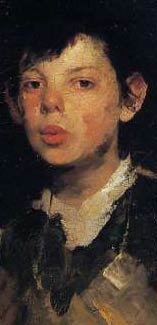 Frank Duveneck (1848-1919), one of the most influential American expatriate realists of the 19th century and the best known of Cincinnati’s painters. (…) During the 1870s and 1880s American artists in Munich experimented with a new style of realism featuring dashing brushwork of quickly applied blocks of color, omitting the careful blending of traditional methods. Young boys or older men from working class neighborhoods were among the artists’ favorite subjects. “Duveneck was uniquely suited to this new style, both because of his precocious skill with the brush and his temperament, which was more suited to brilliantly executing a study of a head in a day than to the careful production of a typical academic piece,” says Denny T. Young.( “He quickly became a leader among the large number of American students drawn to Munich by its exciting new style and often worked with artists such as William Merritt Chase (1849-1916) and John Henry Twachtman (1853-1902), both of whom would earn reputations as major American artists,” she adds.
Frank Duveneck (1848-1919), one of the most influential American expatriate realists of the 19th century and the best known of Cincinnati’s painters. (…) During the 1870s and 1880s American artists in Munich experimented with a new style of realism featuring dashing brushwork of quickly applied blocks of color, omitting the careful blending of traditional methods. Young boys or older men from working class neighborhoods were among the artists’ favorite subjects. “Duveneck was uniquely suited to this new style, both because of his precocious skill with the brush and his temperament, which was more suited to brilliantly executing a study of a head in a day than to the careful production of a typical academic piece,” says Denny T. Young.( “He quickly became a leader among the large number of American students drawn to Munich by its exciting new style and often worked with artists such as William Merritt Chase (1849-1916) and John Henry Twachtman (1853-1902), both of whom would earn reputations as major American artists,” she adds.Typical paintings by Duveneck of this period show a strongly modeled head or figure emerging from a dark, often not fully painted background, with few light or bright highlights. His paint itself is especially oily and has a particularly sumptuous quality. During several summers, Duveneck went to Polling in Bavaria with a group of friends and students to paint en plein air, or out-of-doors. The artist’s landscapes produced there exhibit the free brushstrokes of Duveneck’s figure studies and an immediacy of response to the light and color of the countryside.
In 1879, Duveneck decided to relocate to Florence, Italy, where his student and later wife, Elizabeth Booth, lived. Many of his students, then known as “Duveneck Boys,” followed him to Italy. The artist’s style changed dramatically, with dark street urchins replaced by sweet girls in bright sunlight. With Duveneck‘s broad, vivacious brushstrokes more carefully blended and edited, the paintings of this period lack the masculine force and exuberance of his best work. During the 1890s Duveneck taught a class a the Art Academy of Cincinnati and later became its chairman. From this time the artist’s painting became less important than his legacy as a teacher. He had, however, established himself as an important artist of his period and left a body of work conspicuous for its verve, vitality and quality.
Bron: tfaoi.com
